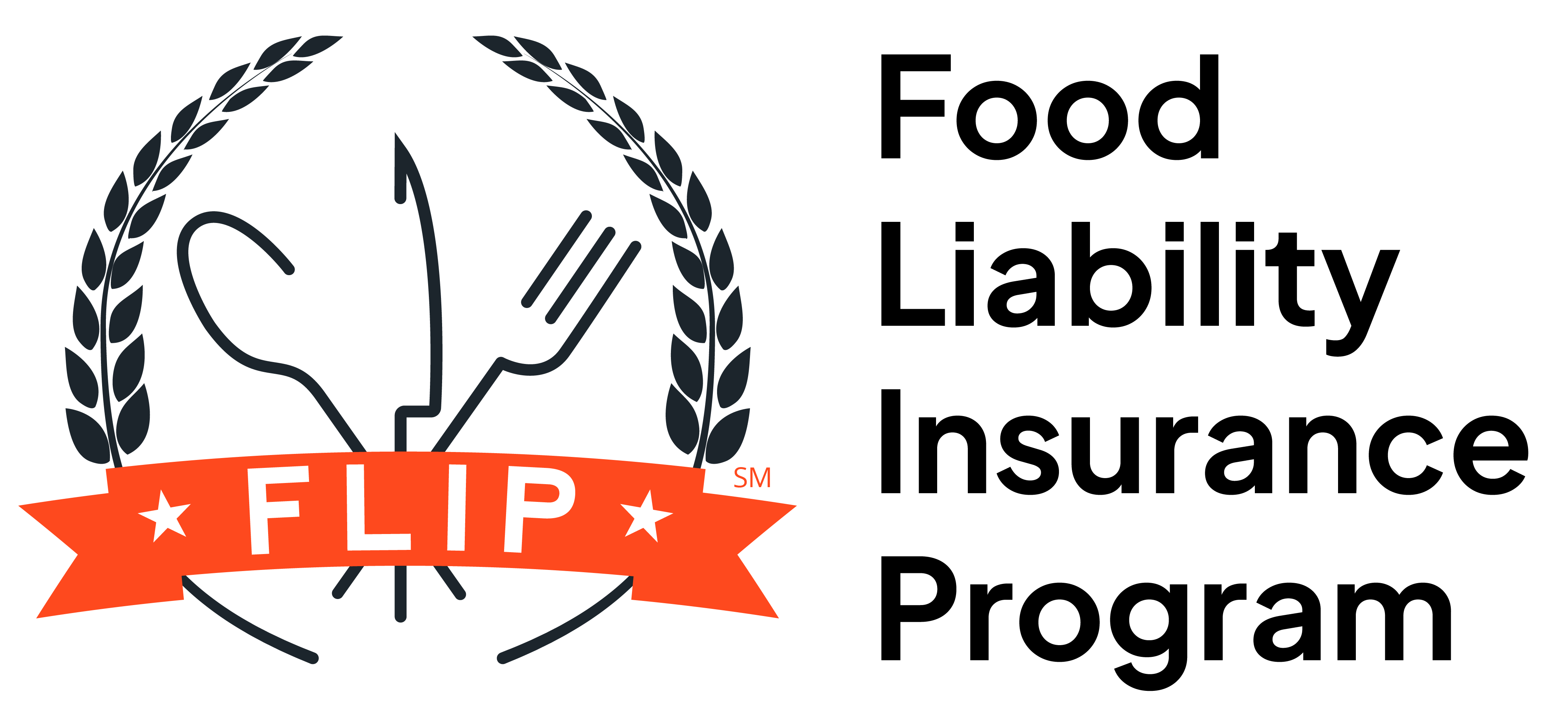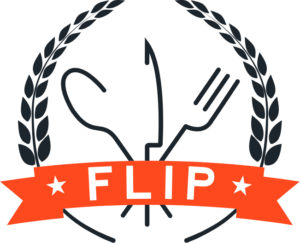Starting a mobile food business without a business plan is like trying to make soufflé without a recipe. There’s a chance you could succeed, but the chance of falling flat is higher.
In fact, 45% of businesses fail within the first five years, often due to poor planning, which is why having a strong business plan in place is so important.
Ready to make yours and learn how to start a mobile food business? Here’s everything you need to do to get started, plus a free business plan template you can download today!
What You Need to Do to Start a Mobile Food Business
Starting a mobile food business involves a lot of moving parts, so if you’re feeling overwhelmed by everything you need to consider, you’re not alone. But you already have the ambition and courage to start — both of which are crucial — so you’re off to a strong start!
Regardless of what kind of foods or beverages you want to sell, there are a few things every mobile food business owner should have figured out before they serve their first customer.
Decide on a Type of Mobile Food Business
First things first: you need to decide what kind of food business you want to run. There’s a lot of variety in the mobile food business industry, including:
- Food trucks/trailers
- Caterers
- Mobile bartenders
- Concessionaires
- Coffee carts/trucks
- And more
Chances are you already have a pretty good idea of which kind of business you want to run at this point. But if you’re still on the fence, do some research into what each type of business entails and what you can expect in terms of income for each of them.
Ideally, you’ll want to pick a business where you can apply your own skill set and expertise. For example, if you worked as a barista in a coffee shop for years, you may have an easier time running a coffee truck than a catering company.
Choose Where to Operate
Running a mobile food business means you aren’t limited to operating in one place like a traditional restaurant. But that doesn’t mean you shouldn’t be thinking about location!
Most mobile businesses have an area they typically operate in, whether that’s one specific city, county, or geographic region.
To choose the most profitable location for your mobile food business, follow these steps:
- Research and understand your target market so you know what cuisine is popular in the area you’re considering.
- Scout high-traffic areas, such as business districts, tourist attractions, college campuses, and entertainment venues.
- Evaluate the competition in your target location, analyzing their menus, pricing, and how you can set your business apart.
- Consider accessibility and convenience, including parking options and walkability.
- Test different locations and track your sales data in each place to see which areas are bringing in the most revenue for your business.
Analyze the Competition
When you’re just starting out, it might feel a little early to start scoping out the competition, but this isn’t the case. Study other businesses like yours early on so you can set yourself apart from the get-go.
A few things to look out for when studying a competitor:
- What is their concept?
- What kinds of foods/beverages do they offer?
- What are they charging per menu item/service?
- What do customers love about them?
- What criticism do customers have about them?
- How do they market their business?
Most importantly, you should be thinking about what you can offer customers that’s not already being offered by other businesses.
If you’re starting a hot dog cart business and none of the other hot dog carts in your area are offering vegan dogs, that’s an opportunity for you to attract customers whose needs aren’t being met by the current options available to them.

Create Your Menu
Whether you’re starting a mobile food truck business or a concession stand, here are some guidelines for what to include in your menu:
- Core menu items: This includes your specialty foods/beverages, or the items that set your business apart from the competition, as well as standard items that most customers will expect to see from a business like yours.
- Diverse options and alternatives: When possible, include items that cater to different dietary needs and restrictions (vegan, vegetarian, gluten-free, nut-free, etc.).
- Seasonal specialties: Including seasonal or limited-time items in your menu is a fun way to attract customers that want to try something new and exciting without committing to a totally new core menu item.
- Allergen info: Make sure you know which items on your menu contain common allergens so you can label them accordingly for your customers and avoid potential lawsuits.
- Pricing and options: Outline prices for each item and its variations (like sizes) as well as the cost of any customizations (like adding bacon) or substitutions a customer might want.
Get Essential Equipment and Supplies
Knowing what foods and/or beverages you’re going to serve will help you determine exactly what kind of equipment you need for your business. After all, an ice cream truck needs different gear than a mobile bartender.
Most mobile food businesses need the following types of equipment:
- Vehicle (food truck, trailer, sprinter van, stand or cart)
- Cooking equipment (grill/griddle, oven, stovetop/burners, deep fryer)
- Refrigeration and storage (refrigerator, freezer, storage shelves, insulated food containers)
- Sanitation and safety equipment (ventilation hood, handwashing sink, three-compartment sink, fire extinguisher, first aid kit)
- Serving equipment (serving window, point-of-sale system, menu boards, condiment dispensers)
- Utensils and cooking gear (knives, cutting boards, pots and pans, mixing bowls, spatulas, measuring cups/spoons)
- Generator
- Propane tanks
- Water tanks

Set Your Pricing
There’s a lot that goes into pricing your products or services, but to start off with, calculate the following costs:
- Ingredients: List all the ingredients you require to make each menu item and their cost per serving.
- Labor: Factor in the cost of wages for you and your employees (or just you, if you don’t have employees).
- Overhead: This includes expenses like fuel, vehicle and equipment maintenance, permits, licenses, insurance, and utilities.
- Packaging: Account for the cost of packaging materials like containers, napkins, utensils, and bags.
Next, determine your desired profit margin, paying close attention to the standard for similar mobile food businesses. For example, food trucks have an average profit margin of 7–8%, with some making up to 15%.
You should also consider what your competitors are charging for similar menu items so you know what customers in your area typically expect to spend on certain foods and beverages.
Then it’s time for a little math! To figure out the cost of each menu item, use this formula:

For example, if the total cost of a menu item is $3.00 and you want a profit margin of 8% (0.08), the formula would look like this:

Brand Your Mobile Food Business
Branding your business isn’t just about coming up with a logo! It’s more complex than that, but you can break it down into two simple parts: brand identity and visual identity.
Define Your Brand Identity
- Mission statement and core values: The purpose behind your mobile food business and what sets it apart from others, as well as what principles guide your business (i.e. sustainability, quality, innovation, etc.).
- Unique Selling Proposition (USP): The thing(s) that make your food business unique, like a signature dish, locally grown ingredients, outstanding service, etc.
- Target audience: Who your ideal customers are, including their demographics, preferences, and behaviors.
- Name: Your business’ name should be catchy and easy to remember. Aim for one that is unique but also clearly reflects your cuisine or concept.
Create a Visual Identity
- Logo: Invest in a professionally designed logo that captures the essence of your brand, or make your own using Canva. Use it consistently across your marketing materials, packaging, menu, and truck design to help build brand recognition.
- Color scheme: Pick the perfect color scheme for your food business that reflects your brand’s personality and appeals to your target audience. Like your logo, the colors you pick should be consistent across all branding materials.
- Typography: Choose readable fonts that you can use across your website, menu, and other materials and that complement your business’ personality.
- Imagery: Only use high-quality pictures of your food to entice customers and consider hiring a professional food photographer to take them for you.
Obtain Necessary Licenses and Permits
The exact requirements vary from state to state and even from one county to the next, but typically you will need the following licenses and permits:
- Business license: Register your business with your local authorities.
- Food service permit: Ensure food safety compliance by completing a course recognized by your local health department.
- Mobile vendor permit: Required by many cities if you want to operate a food truck.
- Vehicle license: Whether you need a food truck or a catering van, make sure you have a registered vehicle that meets your state’s regulations.
- Fire department permit: Often required to ensure cooking equipment meets fire safety standards.
- Commissary agreement: This is necessary if your local government requires you to prepare and store your food in a licensed commissary kitchen.
- Sales tax permit: Register with your local government so they can begin collecting sales tax.
- Liquor license: If you plan on selling or serving liquor, every state requires you to obtain a liquor license.
If you want to break into the food truck industry in particular, learn about the 10 licenses food truck businesses need.
This may not be the most exciting part of starting a mobile food business, but it’s critical to ensure you won’t get shut down by local authorities for illegally operating.

Protect Your Business With Insurance
Insuring your mobile food business is one of the most important investments you can make toward a secure and profitable future.
Every business comes with its own set of risks, and the last thing you want is for your dream business to come to a halt because of an accident.
For instance, if a customer has an allergic reaction to some food you served them because you didn’t label it as containing nuts, they could sue you to pay for their medical bills and wages lost while they were in the hospital.
Or if your generator gets stolen at a food truck rally, you’re looking at hundreds or even thousands of dollars to replace it before you can get back to business.
But, with insurance, you can get help paying for some (or all) of these costs and not have to bear the financial burden of paying for them out of pocket.
Learn more about mobile food business insurance and how you can get coverage starting at $25.92/month from Food Liability Insurance Program (FLIP)!
Secure Funding
Starting a mobile food business requires a significant initial investment to cover costs like purchasing a truck or van, obtaining permits, and buying equipment.
Here are several funding options to consider:
- Personal savings
- Friends and loved ones
- Small business loans
- Microloans
- Equipment financing
- Crowdfunding through sites like GoFundMe and Kickstarter
- Grants
- Angel investors
- Partnerships
Typically, you’ll have more than one source of funding for your business. For example, you may use some of your personal savings towards startup costs while also securing a small business loan and financing your equipment.
Plan Your Marketing Strategy
Having a plan for promoting your business is a crucial step towards attracting new customers. Also, keep in mind that your marketing strategy will need to change and evolve over time as you learn more about what works best with your target market.
Social Media
Whether you’re marketing a food truck or an alcohol catering business, social media is an excellent tool for promoting your brand.
Establish a presence on social media sites where you can share high-quality pictures of your food, behind-the-scenes videos, customer testimonials, and daily updates.
Check out our guide to promoting your food business on Instagram and learn why we recommend this platform for just about any food business!
Website
In addition to having a presence on social media, you need a website for your business. It serves as a one-stop shop for everything there is to know about your business, from your hours of operation to your menu.
You can hire an affordable web designer to build this for you from a platform like Fiverr, or try your hand at making your own using a web hosting service like Squarespace or Wix.
Word-of-Mouth Marketing
Never underestimate the power of word-of-mouth marketing! 92% of customers trust a recommendation from a friend or loved one over all other forms of advertising.
A great way to build word of mouth is to ask customers to leave reviews on Google Reviews and Yelp or to share their positive experiences on social media.
Targeted Direct Advertising
While there are many ways to promote your business for free, it’s often worth it to invest in some paid advertising.
Social media platforms like Instagram allow you to turn any post into an ad, meaning you can pay to get it out in front of users who aren’t already following you. You can also invest in direct mail by sending postcards or promotional flyers to people in your area.

Write a Business Plan
Last, but certainly not least, you need a business plan! Your business plan should contain all of the above information in one convenient place, and can serve many purposes:
- A roadmap for developing your business
- Attracting investors and securing funding
- Measuring your business’ performance
- Financial planning
- Risk management
Here are some of the most important sections your business plan needs.
Executive Summary
This section should include a brief and exciting description of your business that can catch the attention of potential investors. It usually includes details like what product or service you’re providing and your business’ mission statement.
Market Analysis
This is intended to give you and your investors a clear snapshot of where your business fits into the larger market and how you differentiate yourself from the competition. It should include:
- A description of your target market (including demographics, preferences, and behaviors)
- An analysis of the area where you plan to do business
- The competitive analysis research you conducted
Loans and Financing
If you need to secure funding from investors, this is the part of your business plan where you will outline exactly how much you need from them. You should also include information about the other sources of funding you’ve already secured, as well as how you intend to spend investors’ funds.
Download Our Free Mobile Food Business Plan Template
Now that you know everything you need to start your business, it’s time to put together your plan! Of course, even when you know what needs to go into your business plan, it’s still a lot of work to create one.
That’s why we want to make it a little easier on you with our free business plan template! Here’s why we think you’ll love it:
- No need to sweat over organizing your plan on your own — our template comes pre-structured so you can focus on writing about your business.
- Simply enter your information into the blank text fields under each header and watch your plan come to life.
- Once you’ve finished filling out each section, delete the instruction pages and you’ve got an investor-ready plan!
Take some of the stress out of crafting the perfect mobile food business plan and claim your free template today!
FAQs About Starting a Mobile Food Business
How Profitable Is a Mobile Food Business?
Successful food trucks can generate annual revenues ranging from $250,000 to $500,000 with profit margins falling between 10–20% after operating costs. The profitability of mobile food businesses can vary widely depending on factors such as
- Location
- Menu
- Operating costs
- Competition in your area
The good news is that these businesses tend to have lower startup and operating costs than traditional restaurants, so you may enjoy higher profit margins than you would if you opened a brick-and-mortar business.
How Much Does It Cost to Start a Mobile Food Business?
At a glance, here’s a breakdown of the startup costs for some popular types of mobile food businesses:
- Food Truck: $46,700–$187,440
- Caterer: $10,000–$50,000
- Mobile Bartender: $5,000–$50,000
- Concessionaire: $11,000–$45,000
The cost of starting a mobile food business varies depending on where you’re located, what kind of equipment you need, and what permits you need to legally run your business.
What Type of Vehicle Should I Choose for My Food Business?
Food trucks, trailers, and sprinter vans are the most popular choices for mobile food businesses. The perfect choice for you will depend on a few key factors, including:
- Your budget
- The amount of equipment you need to haul
- Whether you need standing room inside the vehicle
If you’re starting a food truck business, check out our guide on how to pick the best food truck out of the top 4 models on the market today.

By Alex Hastings
Alex is a Marketing Copywriter at Food Liability Insurance Program (FLIP). In her free time, she enjoys reading, birding, traveling, and finding any excuse to get brunch.


